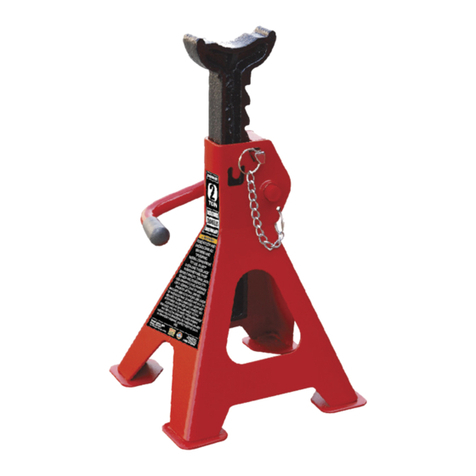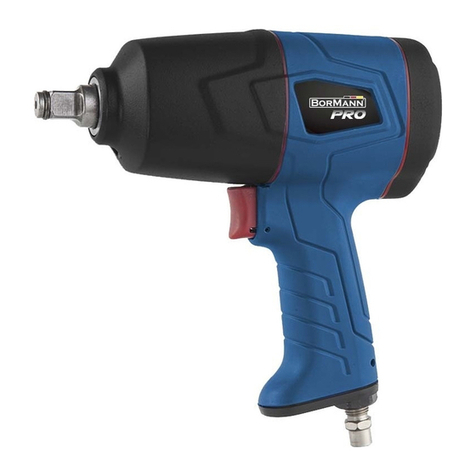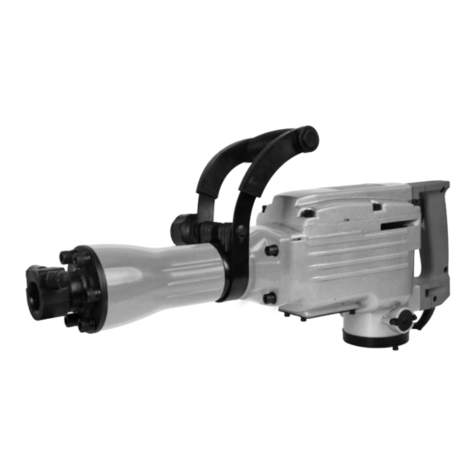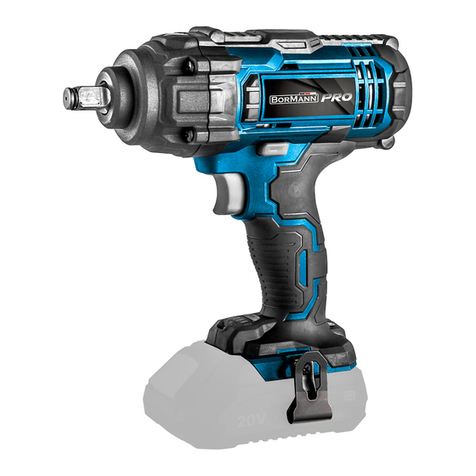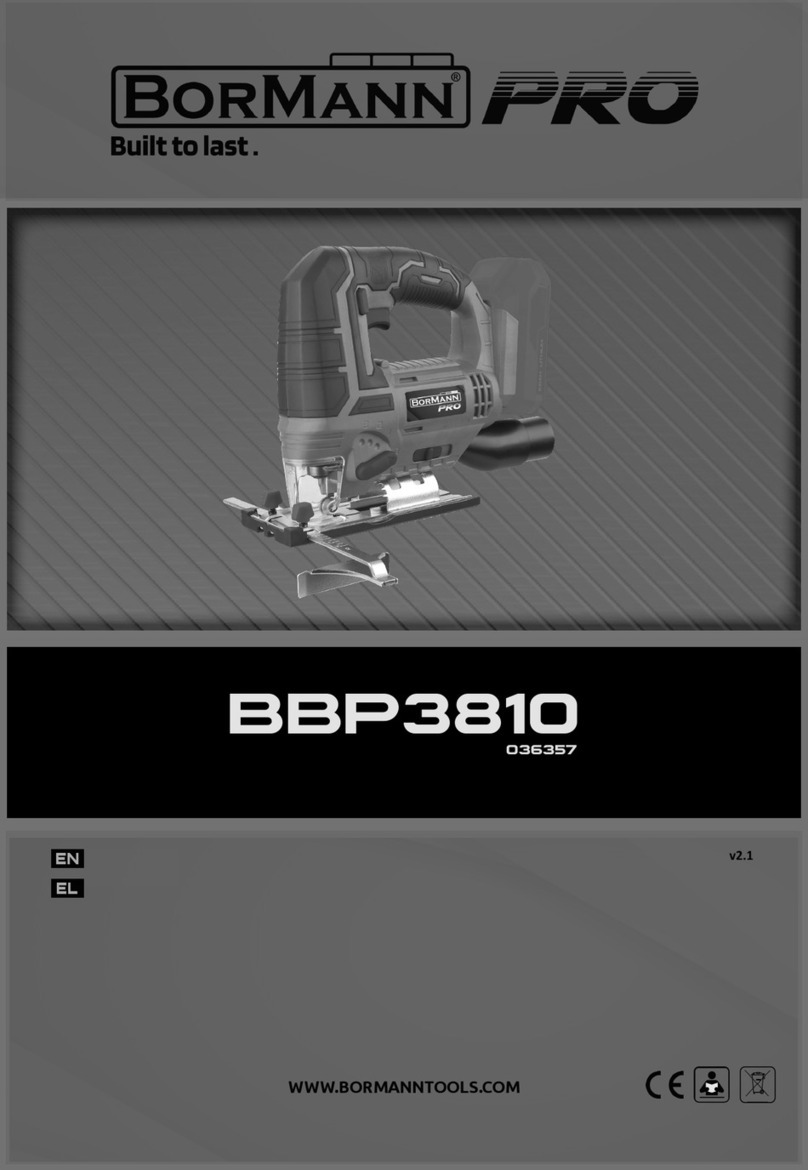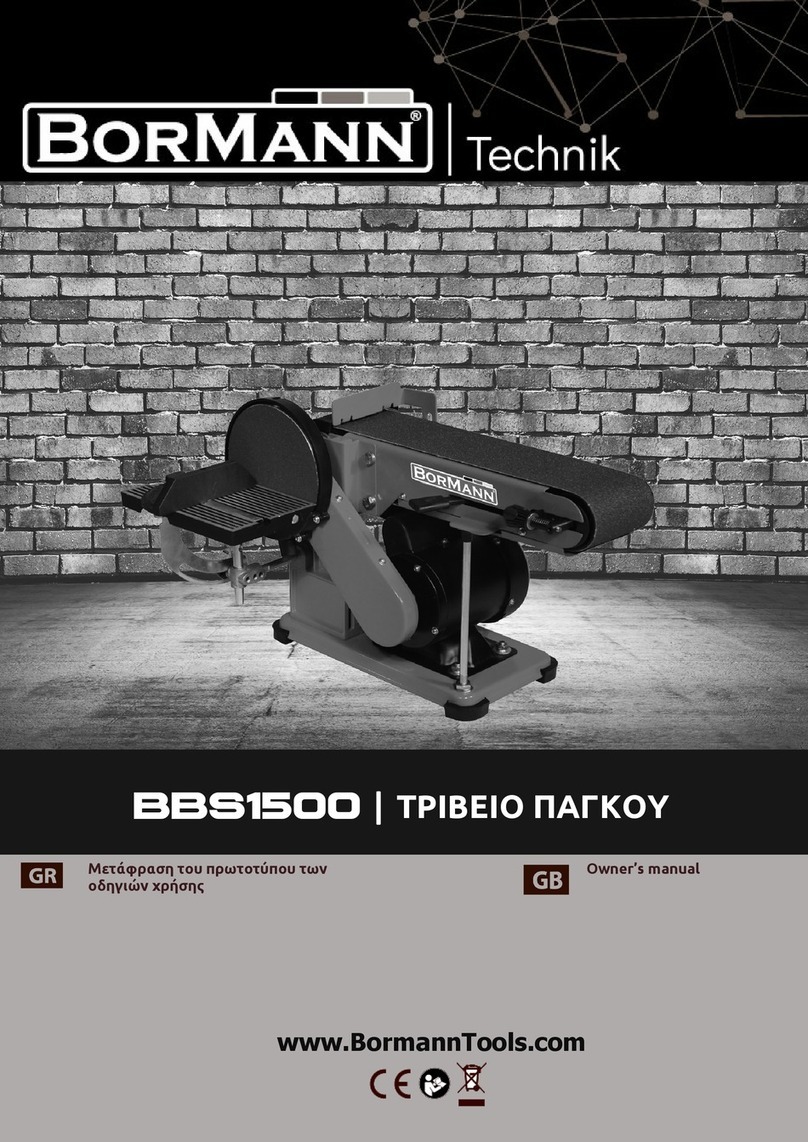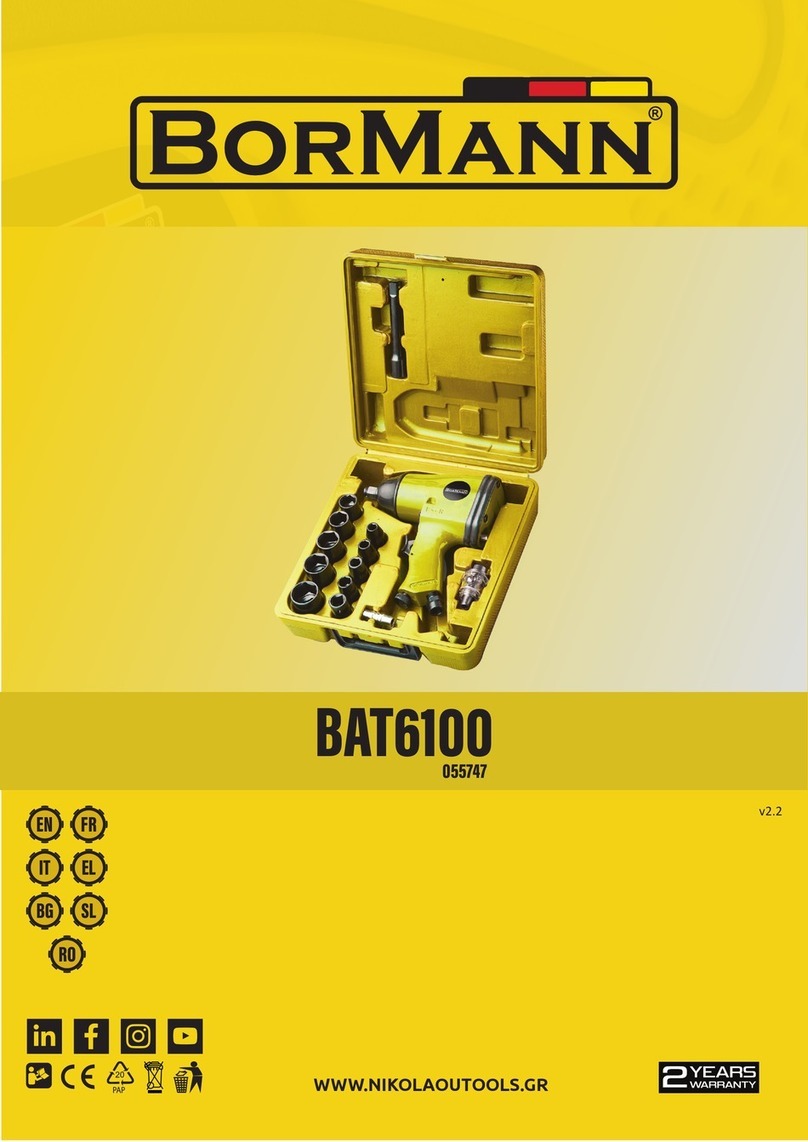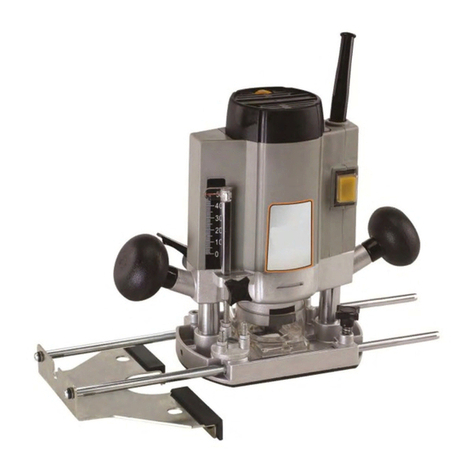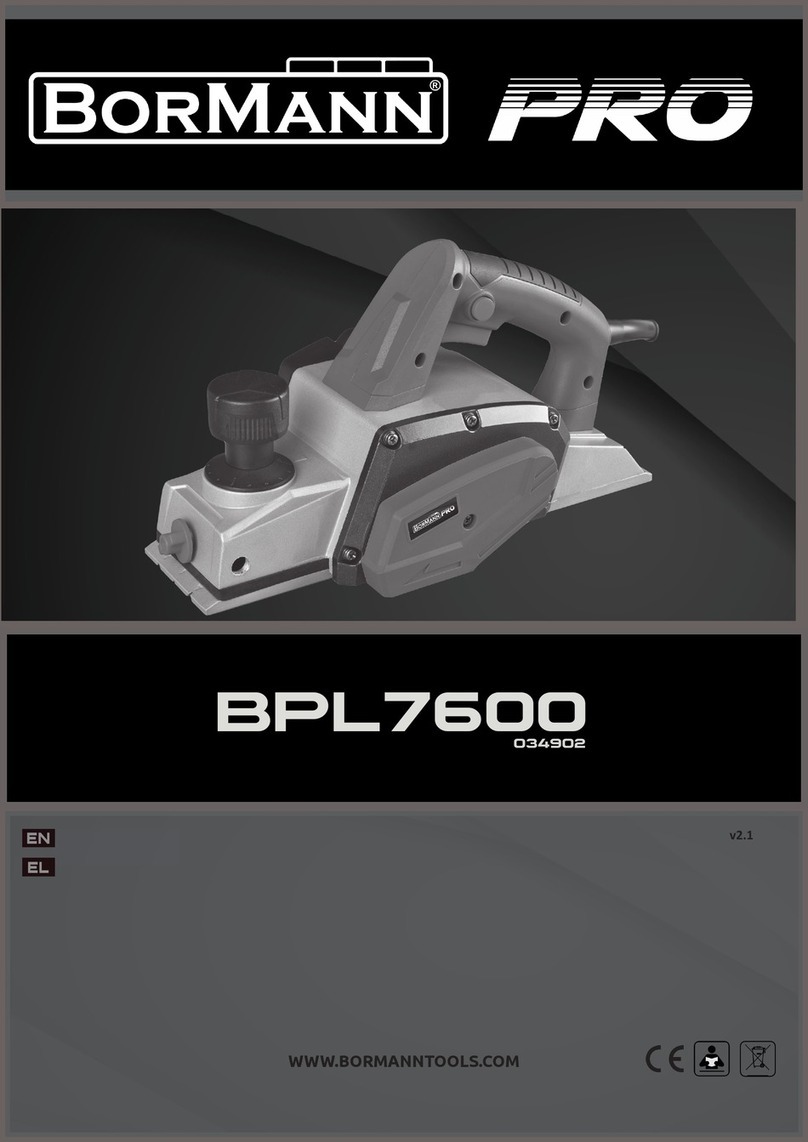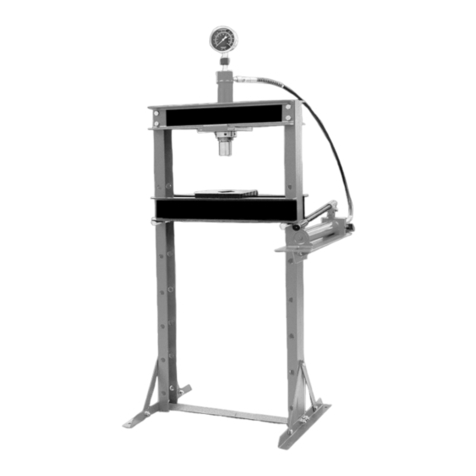
6
f) Keep your cung tools sharp and clean.
Carefully maintained cung tools with sharp cung edges will jam less and are easier to control.
g) Make sure to use electric tools, accessories, aachments, etc. in accordance with these instrucons. Take the condions in your work area and the job in
hand into account.
Using electric tools for any purpose other than the one for which they are intended can lead to dangerous situaons.
5. Service
a) Have your electric tool repaired only by trained personnel using only genuine spare parts. This will ensure that your electric tool remains safe to use.
Safety advice for all uses
General safety advice for grinding, sanding, wire brushing, polishing and disc-cung:
a) This electrical power tool is intended for use as a grinding, sanding and disc-cung machine. Observe all the safety advice, instrucons, informaon in
gures and all other informaon you received with this device. If you do not observe the following advice it could lead to electric shock, re and / or serious
injury.
b) Normave statement / advice for this tool is not applicable.
c) Do not use any accessory not specically intended by the manufacturer for this electrical power tool. Although an accessory may t on your electrical
power tool, this does not on its own guarantee that it can be safely used.
d) The maximum permied speed of an aachment must be at least as high as the maximum speed indicated for the electrical power tool. An accessory
rotang faster than its permied speed could disintegrate or y o.
e) The external diameter and the thickness of the aachment must be compable with the dimensions of your electrical power tool. Aachments that are
not dimensionally compable cannot be adequately guarded or controlled.
f) Grinding discs, anges, grinding wheels or other accessories must t exactly on to the spindle of your electrical power tool. Aachments that do not exactly
t on the spindle turn unevenly, vibrate severely and could lead to loss of control.
g) Do not use damaged aachments.
Before every use check aachments such as grinding discs for loose fragments and cracks, grinding wheels for cracks, deterioraon or excessive wear and
wire brushes for loose or broken wires. If the electrical power tool or aachment is dropped, inspect for damage or change the aachment for an undam-
aged one. When you have inspected and inserted the aachment, posion yourself and bystanders away from the plane of the rotang aachment and run
the device at maximum speed for one minute.
Damaged aachments will usually break apart during this test.
h) Wear personal protecve equipment. Use a full face visor, safety goggles or safety glasses, depending on the applicaon.
Wear a dust mask, hearing protectors, safety gloves or special apron capable of stopping parcles of the grinding medium or workpiece, as appropriate for
the task. Eyes must be protected from the ying debris which can arise from some operaons. Dust or breathing masks must be capable of ltering out the
dust generated by the applicaon. Prolonged exposure to loud noise can lead to hearing loss.
i) Keep bystanders at a safe distance from your work area. Anyone entering the work area must wear personal protecve equipment. Fragments of the work-
piece or of a broken aachment could y o and cause injury beyond the immediate working area.
j) Hold the device by the insulated handle surfaces when you are undertaking work where there is the danger of the aachment striking hidden electricity
cables or the device’s mains lead. Contact with a live wire could cause metal parts of the device to become live and lead to electric shock.
k) Keep the mains lead away from rotang aachments. If you lose control of the device the mains lead may become severed or trapped and your hand or
arm may be pulled into the rotang aachment.
l) Never lay the electrical power tool down unl aer the aachment has come to a complete standsll. The rotang aachment may snag when it comes
into contact with the surface and cause you to lose control of the device.
m) Do not have the electrical power tool running while you are carrying it. Your clothing could become trapped by unintenonal contact with the rotang
aachment and the tool could be pulled into your body.
n) Clean the venlaon slots on your electrical power tool regularly. The motor’s fan draws dust into the housing. A build-up of metal dust could give rise to
an electrical hazard.
o) Never use the electrical power tool near inammable materials. Sparks could ignite these materials.
p) Do not use aachments that require the use of coolants. The use of water or other liquid coolants could result in electric shock.
Safety advice relang to kickback
Kickback is the sudden reacon to a pinched or snagged rotang aachment, such as a grinding disc, grinding pad, wire brush etc. Pinching or snagging
results in the rotang aachment coming to an abrupt stop. This causes the electrical power tool (if not controlled) to move in the opposite direcon to the
direcon of rotaon of the aachment at the point of constraint.
If, for example, a grinding disc is pinched or snags in a workpiece, this can cause the edge of the grinding disc to penetrate the workpiece, become trapped
there and either free itself or kickback. The grinding disc moves towards or away from the operator, depending on the direcon of movement of the disc at
the point of constraint. The grinding disc could also break.
Kickback occurs as a result of incorrect use or misuse of the electrical power tool. It can be prevented by taking the appropriate precauons as described
below.
a) Maintain a rm grip on the electrical power tool and posion your body and arms to allow you to resist kickback forces. Always use the auxiliary handle, if
provided, to exercise the greatest possible control over kickback forces or reacon torques as the device builds up to full speed. By taking suitable precau-
ons the operator can control kickback and reacon forces.
b) Do not place your hands near a rotang aachment. If kickback occurs the aachment could move over your hand.
c) Avoid posioning your body in the area into which the electrical power tool would move in the event of a kickback. A kickback moves the electrical power
tool in the opposite direcon to the direcon of movement of the grinding disc at the point of constraint.
d) Work parcularly carefully in the area of corners, sharp edges etc. to avoid the aachment bouncing or snagging on the workpiece. Corners, sharp edges
or bouncing have a tendency to snag the rotang aachment. This causes loss of control or kickback.
e) Do not use saw-chain woodcarving discs or toothed discs. Such aachments create frequent kickback and loss of control of the electrical power tool.
Special safety advice relang to grinding and disc-cung
a) Always use the guard designed for the type of abrasive consumable you are using. Always use abrasive consumables approved for use with your electrical
power tool. Abrasive consumables not approved for use with your electrical power tool cannot be adequately guarded and are unsafe.
b) To ensure the highest level of operaonal safety, the disc guard cover must be aached to the electrical power tool and set in such a way that the smallest
possible area of the abrasive consumable is exposed to the operator. The disc guard cover is there to protect the operator from pieces breaking o and acci-
